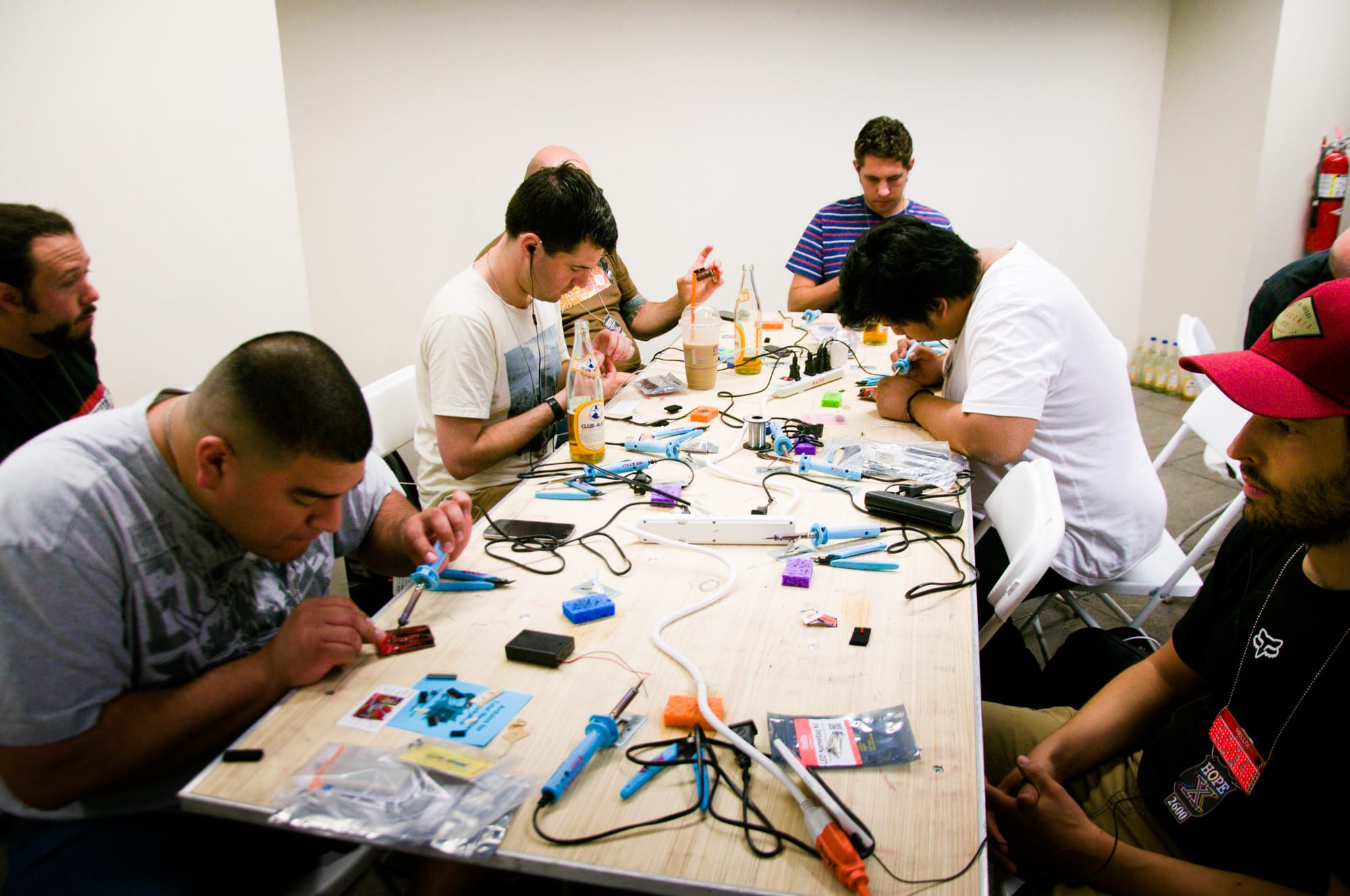
So, you’ve got a receding hairline in 2025. You could visit a dermatologist, sure, or you could try a new crop of websites that will deliver your choice of drugs on demand after a video call with a telehealth physician. There’s Rogaine and products from popular companies like Hims, or if you have an appetite for the experimental, you might find yourself at Anagen.
Anagen works a lot like Hims—some of its physicians have even worked there, according to their LinkedIn profiles and the Hims website—but take a closer look at the drugs on offer and you’ll start to notice the difference. Its Growth Maxi formula, which sells for $49.99 per month, contains Finasteride and Minoxidil; two drugs that are in Hims’ hair regrowth products. But it also contains Liothyronine, a thyroid medication also known as T3 that the Mayo Clinic warns may temporarily cause hair loss if taken orally. Keep reading and you’ll see Latanoprost, a glaucoma drug. Who came up with this stuff anyway?
The group behind the Anagen storefront and products it sells is HairDAO, a “decentralized autonomous organization” founded in 2023 by New York-based cryptocurrency investors Andrew Verbinnen and Andrew Bakst. HairDAO aims to harness the efforts of legions of online biohackers already trying to cure their hair loss with off-label drugs. Verbinnen and Bakst’s major innovation is to inject cash into this scenario: DAO participants are incentivized with crypto tokens they earn by contributing to research, or uploading blood work to an app.
DAOs have been a locus for some of the more out-there activities in the crypto space over the years. Not only are they vehicles for profit if their tokens appreciate in value, but token-holders vote on group decisions. This gives many DAOs an upstart, democratic flavor. For example, ConstitutionDAO infamously tried—and ultimately failed—to buy an original copy of the US Constitution and turn it into a financial asset. HairDAO exists in a subset of this culture called DeSci (decentralized science), which includes DAOs dedicated to funding research on everything from longevity to monetizing your DNA.
Depending on who you ask, it’s either the best thing to happen to hair loss research in decades, or far from it. “They're telling the world, hey, this works,” says a hair loss YouTuber who goes by KwRx and who has arguably been HairDAO’s loudest online critic. “It’s a recipe for disaster.”
HairDAO has turned self-experimentation by its DIY hair loss scientists into research being run in conjunction with people like Dr. Claire Higgins, a researcher at Imperial College London, as well as at its own lab. And, ultimately, into products sold via Anagen. It also sells an original shampoo formula called FolliCool for $49.95 per 200 ml bottle.
“The best hair loss researchers are basically anons on the internet,” Bakst said on a recent podcast appearance. “Of the four studies that we've run at universities, two of the four were fully designed by anons in our Discord server. And then, now that we have our own lab, all the studies we're running there are designed by anons in our Discord server.”
Dan, who asked to remain anonymous, is just another person on the internet trying to cure their hair loss. He’s experimented by adding melatonin to topical Minoxidil, he says, and he claims he has experienced “serious, lasting side effects” from Finasteride.
One day, he came across the HairDAO YouTube channel, where interviews with researchers like Dr. Ralf Paus from the University of Miami’s Miller School of Medicine immediately appealed to him.
“These were very interesting, offering deep insights into hair loss—much better than surface-level discussions you typically find on Reddit,” Dan says over Discord.
To him, it seemed like HairDAO brought a level of rigor to the freewheeling online world of DIY hair loss biohacking, where “group buys” of off-label drugs from overseas are a longstanding practice. If you’ve heard of the real-life Dallas Buyers Club of the 1980s, where AIDS patients pooled funds to buy experimental treatments, then you get the idea.
“People have become more skeptical and smarter about these things, realizing the importance of proper research, scientific methods, and evidence,” says Dan. “That’s where HairDAO comes in. I hope it succeeds because it could channel the energy behind the ‘biohacking’ spirit and transform it into something useful.”
There is no better example of this ideal than Jumpman, a pseudonymous researcher referred to in Hair Cuts, a digital magazine HairDAO publishes to update members on progress, as their “king,” “lead researcher,” “lord and savior,” and by Verbinnen as “the best hair loss researcher by a wide margin.” He earned thousands of crypto tokens with his contributions and is credited with pushing HairDAO to look at TWIST-1 and PAI-1, proteins that are implicated in different cancers, to search for new treatments that inhibit their expression.
One much-discussed drug is TM5441, a PAI-1 inhibitor that has been investigated to treat cancer as well as lowering blood pressure. It’s often called “TM” by Discord members.
“Bullish on TM,” Bakst says in a May 2023 Discord exchange.
“Yeah your blood may have trouble clotting,” he says, acknowledging the potential side effects. “Don't ride motorcycles if you're taking it haha.” Despite this, he’s engaged with users about how they should use it on themselves.
“I’d think it may be best to apply [TM] topically vs orally, just based on ability to target locally more frequently,” he says in an April 2024 Discord exchange with a user who was debating “upping the doses” of the drug, thinking it could be “a good hack.” Bakst added, “~not medical advice~.”
Discussion of group buys isn’t allowed in the HairDAO Discord. When one user brought up the topic in August last year, Verbinnen chimed in, “None of this here.” But one risk that comes with funding anonymous internet researchers experimenting with unproven drugs is that they might not play by the rules.
In messages pulled from a now-deleted Telegram channel seen by 404 Media, Jumpman discusses buying over half a kilogram of TM6541—another PAI-1 inhibitor—and says that the drug “will be ready in 6 weeks.” Jumpman also shares photos showing bags of pill bottles and says, “these are shipping out next week.” The labels on the bottles aren’t readable, and 404 Media can’t confirm if they actually shipped. Jumpman could not be reached for comment. It’s not clear whether the Telegram chat was officially linked to HairDAO, but it included HairDAO members other than Jumpman. In another Telegram message, a user says, “Guys, stop using TM, I found blood in the semen, after [several] tests, the doctor said it’s due to [blood pressure medications], careful.”
“Maybe you were taking too much TM to cause internal bleeding,” Jumpman responds.
Dan says this exchange didn’t worry him at the time. “The ‘blood in his semen’ thing happened to me once as well but I was not on any medications and [the] doctor told me it can happen sometimes and it’s not dangerous,” he says. “So I am hopeful that [the user] is alright, and that it resolved quickly, and that whatever he experimented with didn’t hurt him... does it concern or worry me personally? Not really because I don’t plan to use TM.”
Indeed, according to the Mayo Clinic, blood in semen—a condition known as hematospermia—most often goes away on its own, without any treatment. The Cleveland Clinic adds that it’s usually not a sign of a serious health problem and could be caused by a blood vessel bursting while masturbating, like blowing your nose too hard. Both organizations recommend consulting a doctor.
Jumpman may have actually been on to something with his focus on PAI-1 in particular. Douglas Vaughan is the director of the Potocsnak Longevity Institute at Northwestern University. PAI-1 inhibition is a longtime focus of his research. He has studied Amish populations in Indiana, for example, because of a mutation that inhibits PAI-1 and may protect against different effects of aging. He’s also investigated PAI-1, and TM5441, for hair loss—completely by accident.
“We were thinking, well, someday somebody's going to want to make a drug that blocks PAI-1. Why don't we make a mouse that makes too much of it?” Vaughan tells 404 Media. After engineering the mice, chock full of human PAI-1, he noticed something unexpected.
“Those mice were bald,” he says. He began working with Toshio Miyati, a professor at Tohoku University in Japan, who convinced Vaughan to try the drug TM5441 on the mice.
“He sent me a drug that was called TM5441, and we simply put it in the chow of our transgenic mice. We fed it to them for several weeks, and lo and behold, they started growing hair. I said, well, how about that?” he says.
But, he cautioned, people shouldn’t try TM5441 on themselves to cure their hair loss. “I think it’s foolish,” says Vaughan. “There are all kinds of reasons why you might take a drug or not, but usually you want to go through the regulatory steps to see that it's proven to be safe and effective.”
While TM has been much-discussed by HairDAO members, and it’s currently listed as a “treatment” on its online portal for people to discuss treatments and upload bloodwork, it isn’t named as a drug that HairDAO is formally investigating or sold to the public by Anagen. Vaugn says he was contacted by the group over a year ago, but a research partnership never materialized. Today, the group is pushing forward with investigating different drugs inhibiting TWIST-1 instead.
“In general, if you're an individual person and you're experimenting on yourself, that is frequently outside the scope of regulation,” says Patricia Zettler, an associate professor at The Ohio State University Moritz College of Law who previously served as Deputy General Counsel to the U.S. Department of Health & Human Services (HHS).
“Where biohacking activities tend to intersect with existing regulatory regimes, whether at the federal level or the state level, is when people start giving drugs, selling drugs, or distributing drugs to other people,” she adds.
It’s unclear how much interaction HairDAO has had with regulatory bodies. Messages posted in Discord reference FDA consultants and gathering materials to submit to the agency.
Last year, the YouTuber KrWx created a series of videos and Substack posts airing his concerns with HairDAO’s DIY approach, generally labelling it dangerous and possibly illegal. He received a cease and desist letter from the group’s lawyers, seen by 404 Media, calling his claims false and defamatory. The merit of KrWx’s claims aside, his spotlight kicked off major shifts in the DAO’s Discord.
For one, Jumpman disappeared.
Andrew Bakst sits wearing a white lab coat, blue-gloved hands holding testing equipment. He looks at the camera. “PCR,” he says. “...PCR.” The cameraperson, a Discord user who uploaded the video in early April, laughs. “Got to repeat shit when we’re in the lab late at night.”
This New York-based lab space, opened in November, is where much of HairDAO’s latest work happens—already a far cry from the Jumpman era, just a few months after he vanished. The group is currently pursuing preclinical testing on three different protein targets and drugs, and claims to have filed for six patents. This work includes, for example, testing drugs on mouse skin.
“We also tested drug penetration on dry versus damp mouse skin,” Verbinnen wrote in an April Discord message, adding that "drugs penetrate damp skin much more than dry skin at least in the mouse model."
HairDAO has even run a human trial for T3, the thyroid drug that it sells via Anagen, involving six patients including Verbinnen and Bakst. In that trial, the participants were given a topical ointment to apply to their scalps, and the hair growth results were measured at the end of a year-long period. That research resulted in a preprint paper, which is available online.
“It is important to note that this study involved only six participants, which is a small sample size,” a disclaimer on the study included in an update for DAO members explains. “As such, we make no claims about the safety or efficacy of topical T3 based on these results.”
The Anagen listings for its T3 formulations promise “outstanding” and “maximum” results.
HairDAO conducts this work in collaboration with a handful of accredited researchers. The group says the T3 trial was “overseen” by Dr. Richard Powell, a Florida-based hair transplant surgeon whose name does not appear on the author list. Powell has close ties to HairDAO’s Chief Medical Officer, Dr. Blake Bloxham. The website for Powell’s practice says that it “exclusively uses in-house hair transplant technicians trained by Dr. Alan Feller and Dr. Blake Bloxham.” A 2023 YouTube video describes Powell as “part of Feller & Bloxham Medical.” An early draft of the T3 study design even indicates that both Powell and Bloxham would oversee it.
According to messages posted to Discord by the founders, Bloxham has a 49 percent stake in Anagen’s US operations. He’s even participated in the business side of expanding the service, such as by setting up corporate entities, according to Discord posts.
The T3 study discloses several conflicts of interest—including that HairDAO has filed a patent—but does not mention Powell or Bloxham, as they are not listed as study authors. When reached for comment over email, Bloxham initially said, “I’d love to answer any questions you have. In fact, I’d be happy to discuss HairDAO/Anagen in general; who we are, what we do, and why we do it. Pretty interesting stuff!” He did not respond to multiple follow-ups sent over email and Discord. In fact, none of HairDAO’s research collaborators contacted by 404 Media, including Powell, Paus, and Higgins, responded to requests for comment.
Verbinnen and Bakst did not respond to multiple requests for comment sent over email and Discord.
In the latest issue of Hair Cuts, HairDAO claims that Anagen earned $1,000 in its first two days of sales. As for its shampoo, FolliCool, it says that it has sold $29,000 worth of product. Meanwhile, its crypto token is worth roughly $25 a pop, down from a high of $150, with a market cap of over $16 million.
Its marketing costs to date? $0.




















